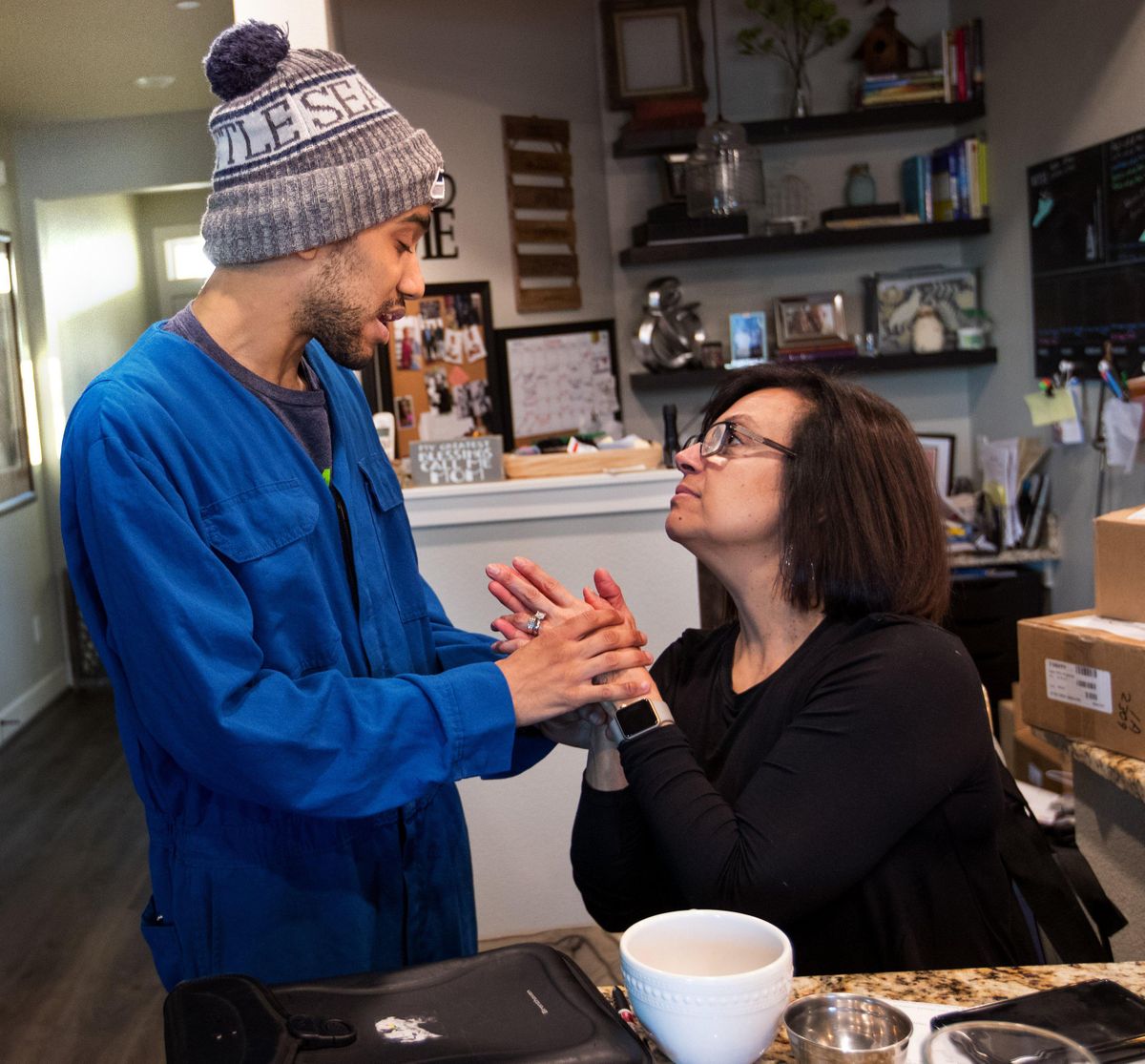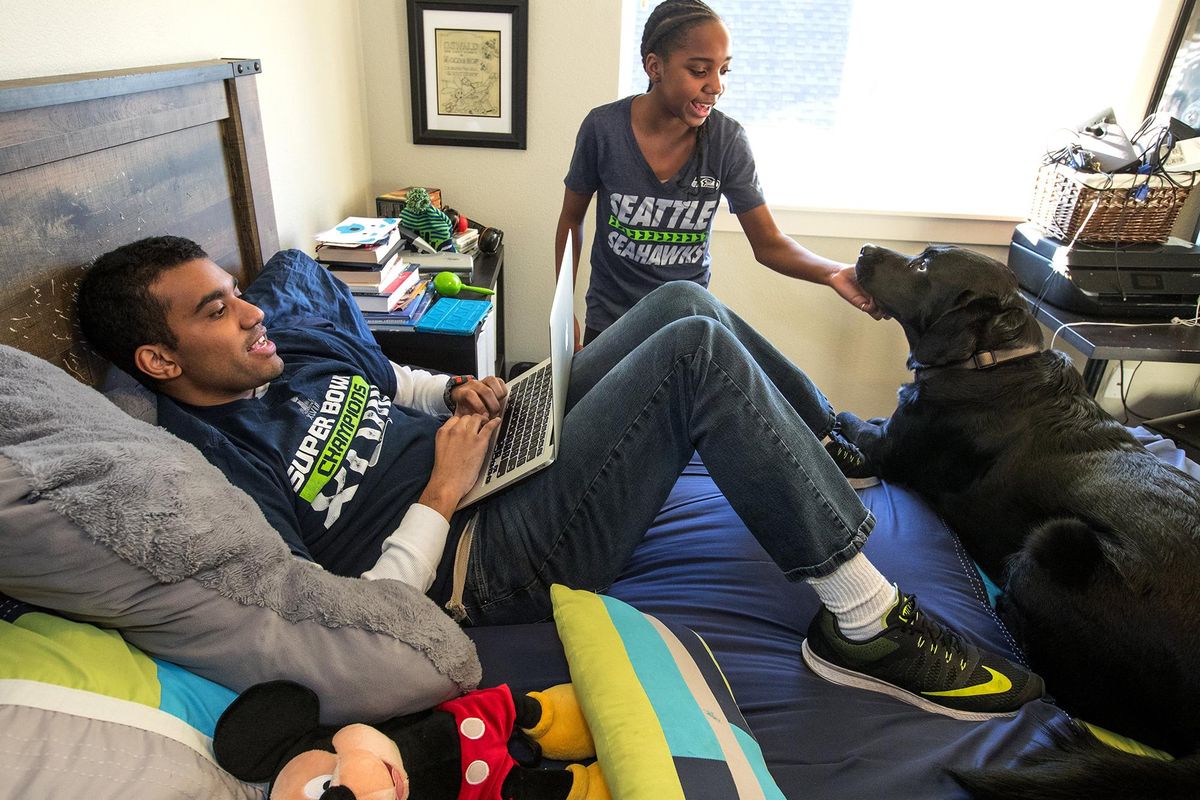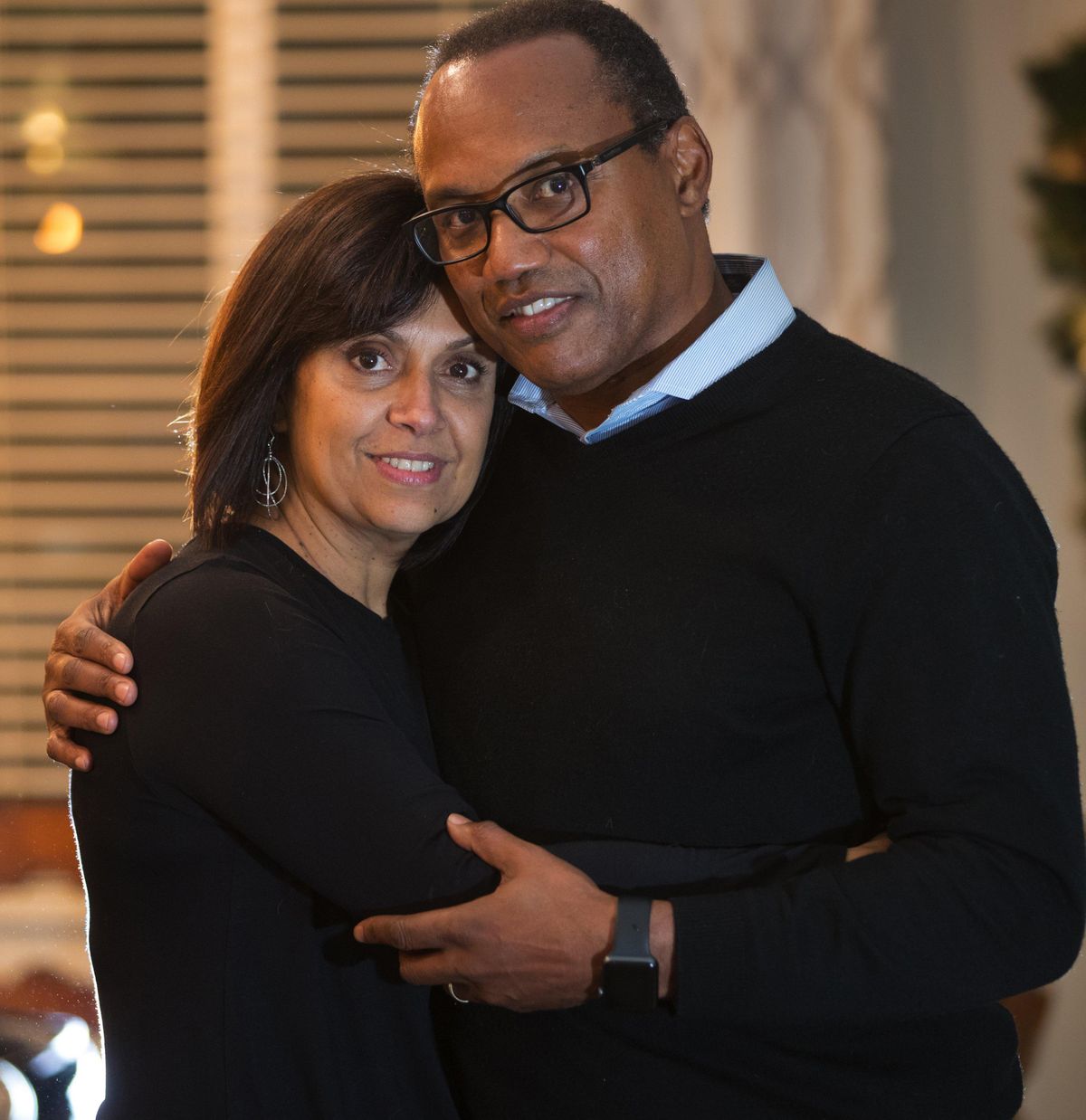Curt and Ana Warner show the strength of family, even on the darkest of days, in memoir ‘The Warner Boys’

Sometimes strangers at book events approach authors Ana and Curt Warner with an unusual request: Do you mind if I hug you?
It doesn’t come off as awkward because the Warners understand completely, and respond to embraces in kind. Sometimes highly personal stories are shared. Often it gets emotional. The New York Times doesn’t chart “Most-Hugged” authors, but the Warners probably would be high on that list if it did.
These moments are about far more than getting authors’ signatures on the title page of a book. Or of those fans of the Seattle Seahawks hoping to get an autograph from Curt, a former Pro Bowl running back.
This powerful connection to readers is rooted in mutual respect and empathy shared by those who have dedicated much of their lives raising children with special needs. In reviews and comments, readers have offered similar versions of a prevailing sentiment: “The Warner Boys” book has given voice and witness to their own dramatic narratives.
Somebody has told our story. We’re not alone.
“It’s amazing,” Ana Warner said of the quick and deep bonding with readers. “A lot of times it’s without even saying anything. We can just look at each other and know what the other has been through.”
With the December publication of their memoir, the Warners finally told the story they’d kept to themselves for decades. In raw and honest terms, they wrote of raising twin sons with autism spectrum disorder, and laid out in painful detail their struggles with grief and death and depression amid the destruction of their home by the twins’ violent behavior and a life-threatening fire.
Readers relate not only to the story but to the sense of humanity the Warners bring to the telling. Particularly Ana, who seems willing to be everyone’s mother.
“I connect, especially to the moms,” Ana said. “I want to hug them and hold them tight and say ‘It’s going to be OK.’ I wish I could go home with them and help. I want to say, ‘Call me and I’ll come over and cry with you.’ I wish I could do that with every one of them.”
These are sentiments that readers are not likely to receive from Stephen King or James Patterson.
Austin Warner, left, and his sister Isabella spend time with the family dog, Boomer, in Austin's bedroom at the family home in Camas Washington in December 2018. Former Seahawks running back Curt Warner and his wife, Ana, have four children including severely autistic twin sons. They have written a book titled, "The Warner Boys" about their family and struggles. Photographed on December 4, 2018. (Mike Siegel / The Seattle Times)
Their book doesn’t promise answers; Curt and Ana confess up-front that they’re not experts on autism and they’re not doctors – they’re parents. Parents like so many others trying to make the best of a tough situation. They write about the scars and close calls and fears. And they now stand as evidence of a vital truth: It can be done.
The book is about that process. It’s about parenting and relationships. But it’s also a love story, and how this couple shares qualities that sometimes seem only fictional – unwavering commitment and unconditional love.
They will talk about these things at the Northwest Passages Book Club on April 14, 3-5 p.m. at Spokane’s Bing Crosby Theater. Don’t be bashful if you feel like giving them hugs afterward. They understand, and reciprocate.
Youtube
Out of the spotlight
From the fans’ perspective, Curt Warner had disappeared from the public eye. Truth is, he was very busy being a parent.
After his elusive running helped the Seahawks mature from exciting expansion team to playoff contender, Curt started his post-NFL career by buying a car dealership in Bellevue. It had been only a few years after he had married Ana, an aspiring Brazilian model, that they set about starting their family.

In 1991, their first son, Ryan, died as a full-term stillborn. Miscarriages followed before a healthy son, Jonathan, was born. In quick succession, Ana gave birth to twins, Austin and Christian. At roughly 2, the twins started falling dramatically short of developmental benchmarks, and for three more years, their behaviors became more curious and worrisome before a belated diagnosis of autism spectrum disorder.
By then, the family had moved to Camas, in southwest Washington, where Curt took over a different dealership. Over the years following the diagnosis, the Warners employed an army of therapists and attempted every promising treatment, finding occasional progress often followed by disappointing regression.
The story became so much more, growing darker, as the twins began self-injurious behavior, biting themselves and each other, sometimes banging their heads on floors and walls. Each of the twins began experiencing what Curt and Ana called “meltdowns,” when they would start screaming and frantically waving their hands, or repeatedly kicking holes in walls.

The twins were indefatigable, requiring the parents to tend them in shifts. Curt and Ana became increasingly isolated by their need to fully focus on parenting. They put alarms on all doors and windows, learning the potential danger one time when Austin got out when a door was left open by a visitor and was found wading in a roadside pond in his diapers.
They locked up sharp objects after Austin got a knife off a countertop and repeatedly stabbed a couch, acting out a scene from a Disney movie. And anything that could start a fire was hidden. So they thought.
After Curt lit candles for the birthday cake for 2-year-old Isabella, their adopted daughter, Austin saw that Curt had returned the lighter to its hiding place in the garage. When Curt left for work the next day, Austin found the lighter and, again acting out a scene from a Disney movie, lit a fire in his bedroom.
Jonathan was heroic in herding the children from the house, but Ana was nearly overcome by smoke inhalation attempting to fight the fire. Little more than the external structure was left standing by the time Curt raced home from work.
In the face of such unrelenting stress and exhaustion, Ana grew depressed. “For months, I didn’t want to live; I was too overwhelmed,” she wrote. “Many times I thought about ending it all.” She gradually came to realize that her family needed to be together and she slowly clawed her way back, eventually being diagnosed with PTSD. Listening to a Christian radio station in the car, she said, helped “minister to her” during this darkest time.
Ana and Curt both often credit their devout faith as a stabilizing and guiding focus through the years. But they also never forget to cite the rock-solid foundation of their marriage.
“Whenever I got way down, Curt picked me up,” Ana said. “He’s always been my rock.”
“And when I got down, she picked me up,” Curt said. “We’re not saying there weren’t tough times. There were, as tough as it could get, but I think we always knew it would be worse if we weren’t together. We needed each other, we were there for each other, and, now, here we are.”
Isabella, now 13, was asked at age 9 about her parents and how they treat each other. Her summation tells a great deal about Curt and Ana and the core of their relationship. “Mommy makes treats and Daddy eats them,” Isabella said. “They’re always lovey-dovey and smoochey-woochey. I see them and I go ‘ewwww.’ ”
Telling their story
For years, Curt and Ana Warner shrugged off suggestions they write a book about their experiences. Ana was too busy, making every meal from scratch (to assure control of healthy ingredients), and trips to various doctors and therapists for the twins. Curt simply was adamant he didn’t want to go back through the difficult times.
If they told the public what they had been dealing with, both were afraid it would sound as if they were complaining about lives in which they’d been gifted in so many ways. People with far fewer resources were coping with similar trials, they knew, a realization that “breaks my heart every day,” Ana said.
And they didn’t want to foment more debate among the emotional factions in the ASD “community.” People trying to deal with the struggles of their beloved children don’t need anybody judging them or their opinions, they stressed.
Two developments caused them to reevaluate their opinion on telling their story. When the twins reached their late teens, their behavior stabilized to a degree, with fewer violent outbursts, giving their parents more time and energy.
The second prime motivator was to raise awareness of a disorder that continues to grow more prevalent (affecting one in 40 American children, now, according to a recent study in the journal Pediatrics). And also to raise funds for causes related to adults with autism – including their own twins.
For the most part, Austin and Christian Warner (now 24) have “aged-out” of the social-assistance system. The reality forced Curt and Ana to examine their mortality, and consider who would take care of the twins when they were gone. They certainly didn’t want to leave the financial burden to oldest son Jonathan or to Isabella, who was adopted in 2007.
Youtube: Seattle Seahawks Legends
Curt sold his car dealership in 2010 and learned the insurance business as a job that would give him greater flexibility to get home when he was needed. He has been added as a member of the Autism Society of America’s board of directors. Ana has taken classes to become an integrative nutrition health coach, but still can’t find enough time to practice, with both twins at home.
Curt and Ana have been saving to buy a house at a ranch/treatment center in Ellensburg that features full-time caregivers and therapists. Without significant discoveries of curative treatments, the twins are unlikely to ever live independently. Curt is 58, and Ana 56; they know they have to plan ahead to assure lifelong security for the twins.
Austin and Christian are full-grown men, now, with cognitive capacity and communication skills of 5- or 6-year olds. Both had worked part-time at jobs that accommodated workers with disabilities, but neither has been able to continue. They remain highly dependent and live at home. They deal with continuing health problems sometimes associated with ASD, particularly Christian, who also has pediatric autoimmune neuropsychiatric disorder associated with streptococcal infections (PANDAS).
In recent months Christian has needed several hospital visits to handle a new behavior, persistently holding his breath. “It’s his immune system reacting, the body attacking itself,” Ana said. “He does it so hard that his eyes get bloodshot like he was in a boxing match. It’s cycling behavior, in and out. It’s incredibly frightening; we don’t know the reason. Doctors don’t know what it is and we don’t know how to fix it.”
Both the twins have shown building anxiety in February, too, Ana said. The house fire was in February 2008, and even though it was 11 years ago and they have moved to a different house, they both get flashbacks. “It hits Christian very hard,” Ana said. “He starts getting excited, saying ‘fire … smoke’.”
Their challenges, Curt said, “are still an ongoing process.” The difference is that now far more people know about them.
“The Warner Boys” was published by Little A, an Amazon imprint. It was selected by editors for Amazon’s First Reads promotion for the month of November, and immediately was listed as an Amazon No. 1 best-selling memoir. It earned a “starred review” from Publishers Weekly, which raved: “Healing and transformative, this memoir of love and faith shows no situation is beyond hope.”
Little A editor Erin Calligan Mooney attached to the book on first sight. “I was truly humbled,” she said. “Never has a story made me wonder just how much any one of us can handle. (They) have spent the last 20 years relying on their tenacity, patience, faith, and most important, each other, just to make it through each day.”
Dave Boling co-wrote “The Warner Boys,” with Curt and Ana Warner. He is a former sportswriter at The Spokesman-Review and the Tacoma News Tribune. Follow him on Twitter at @DaveBoling.



